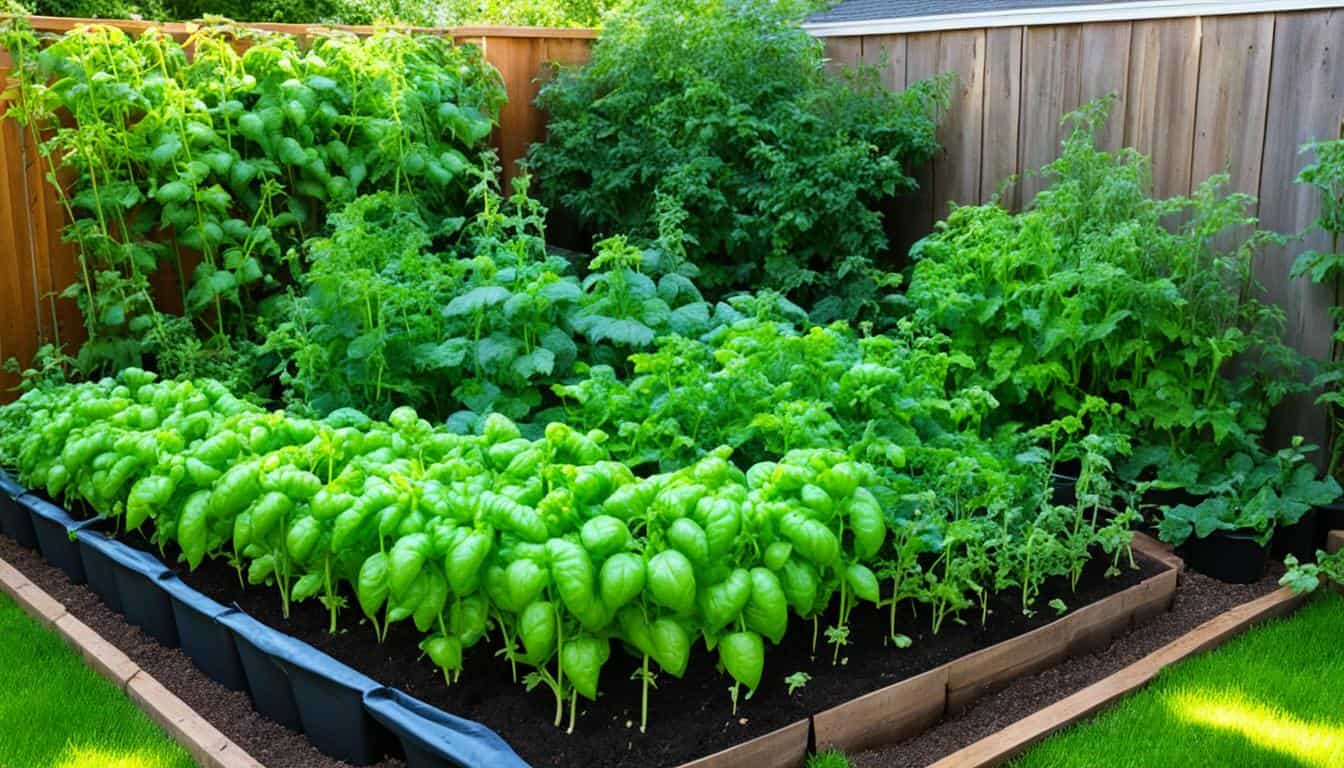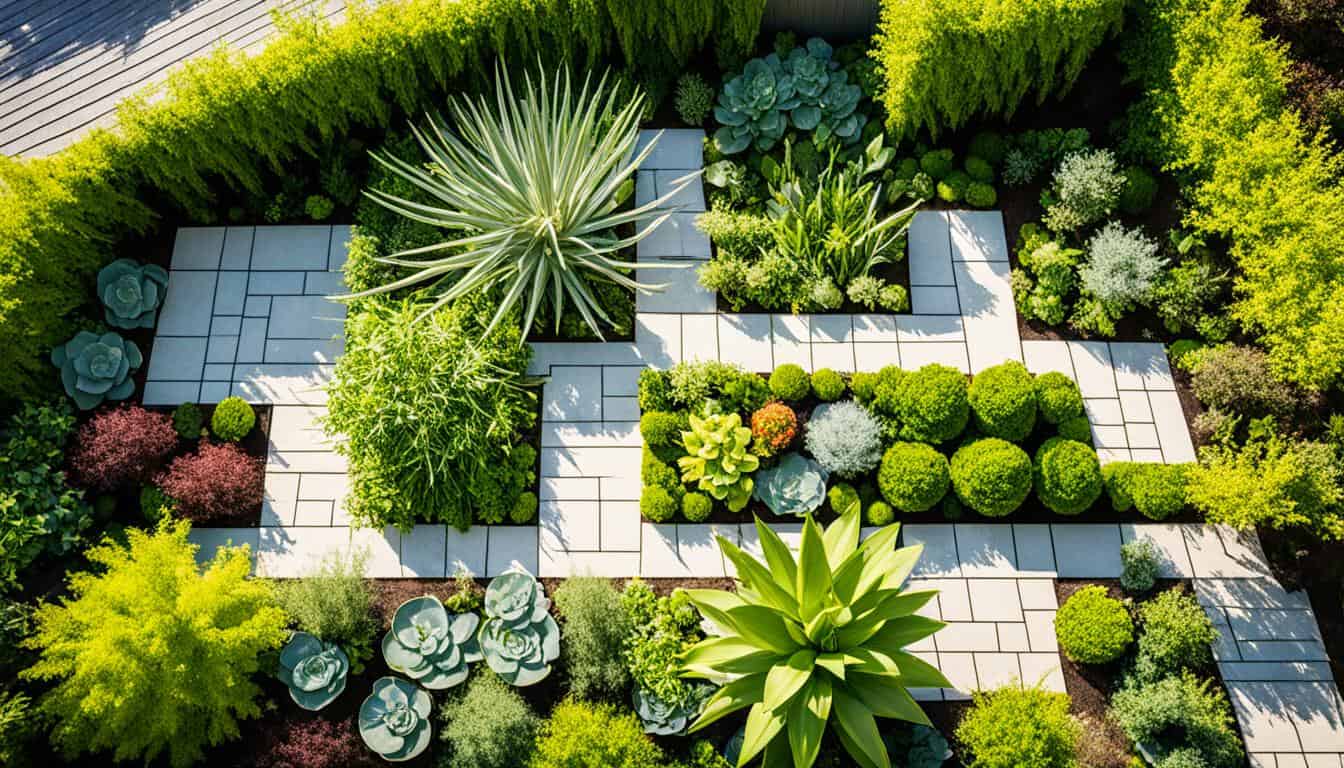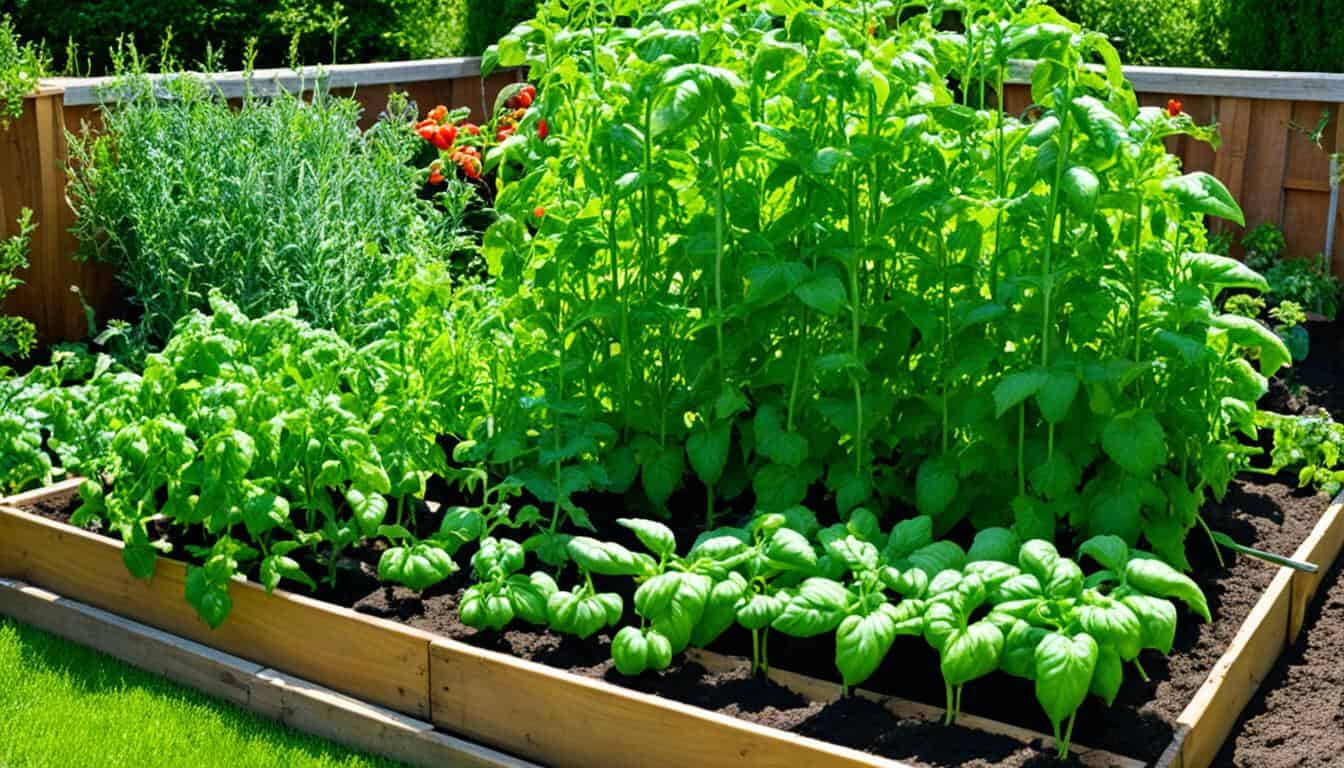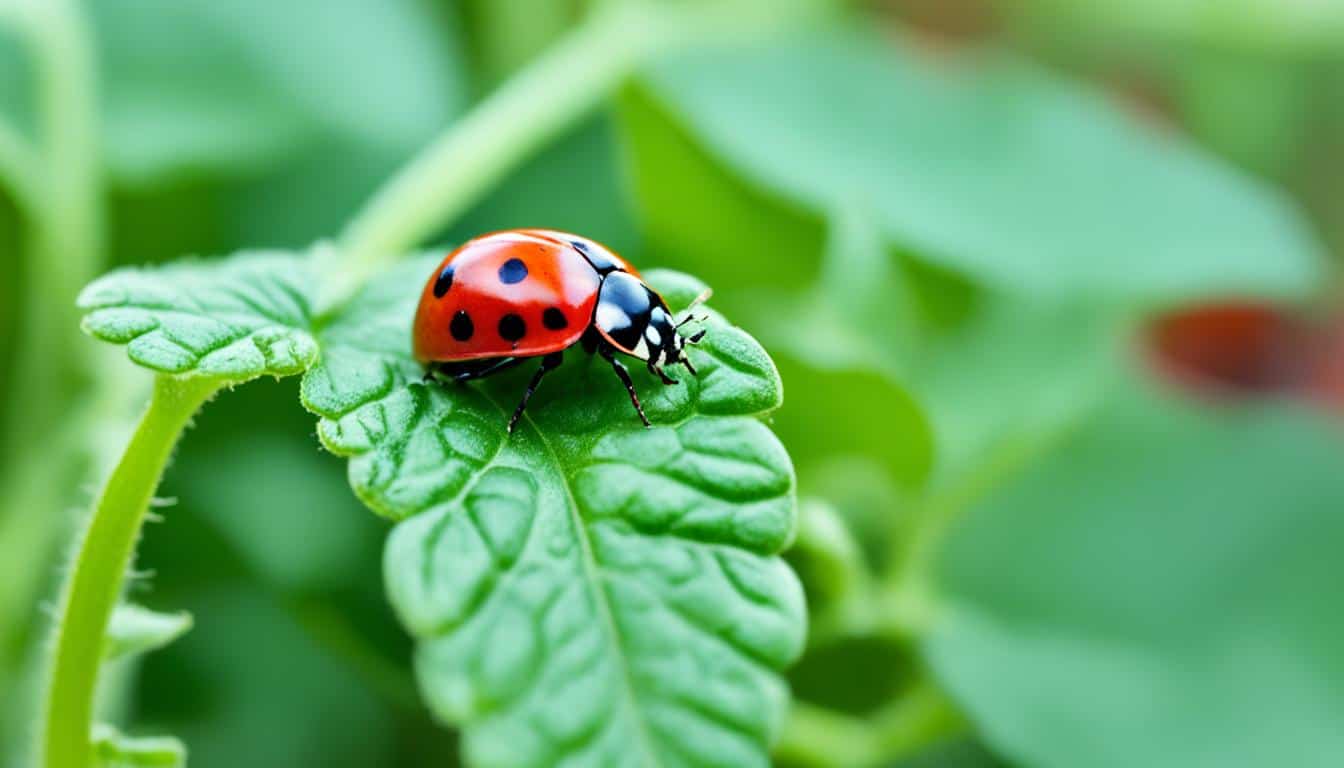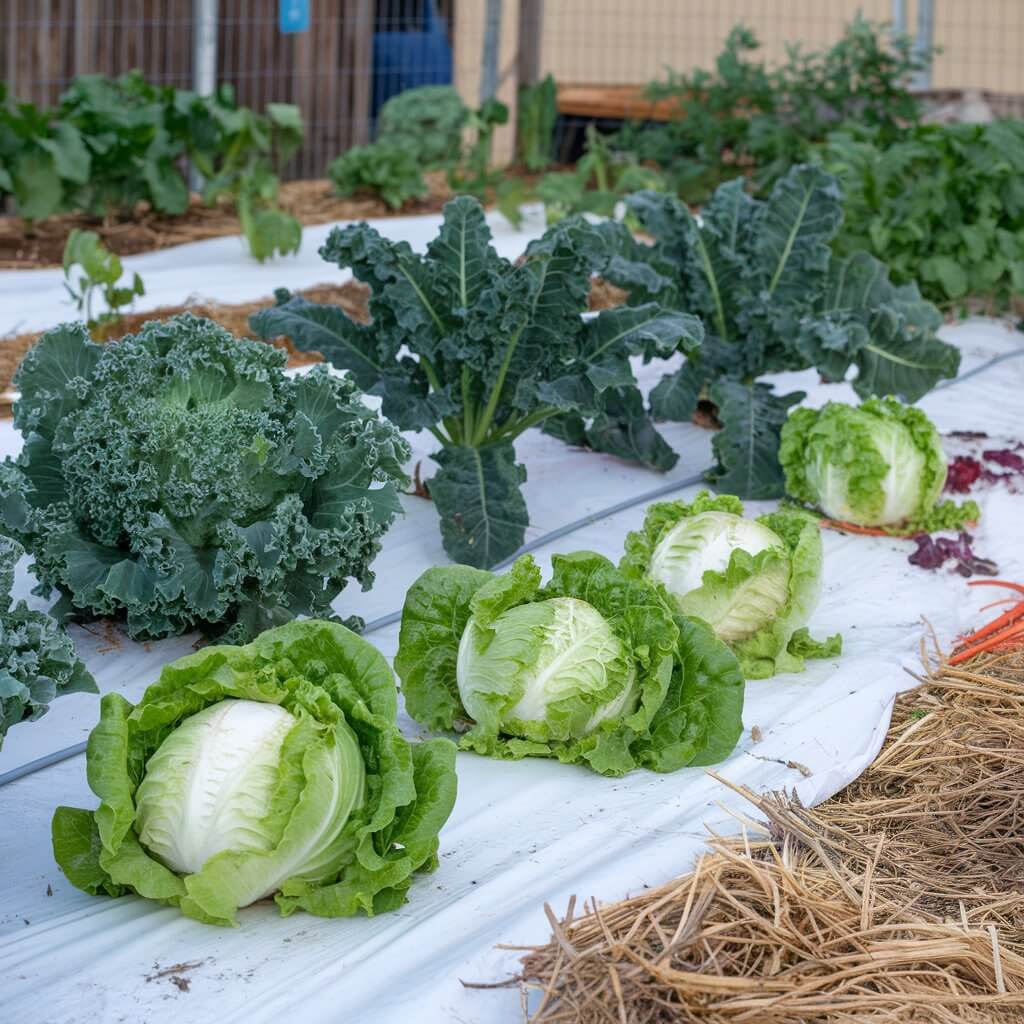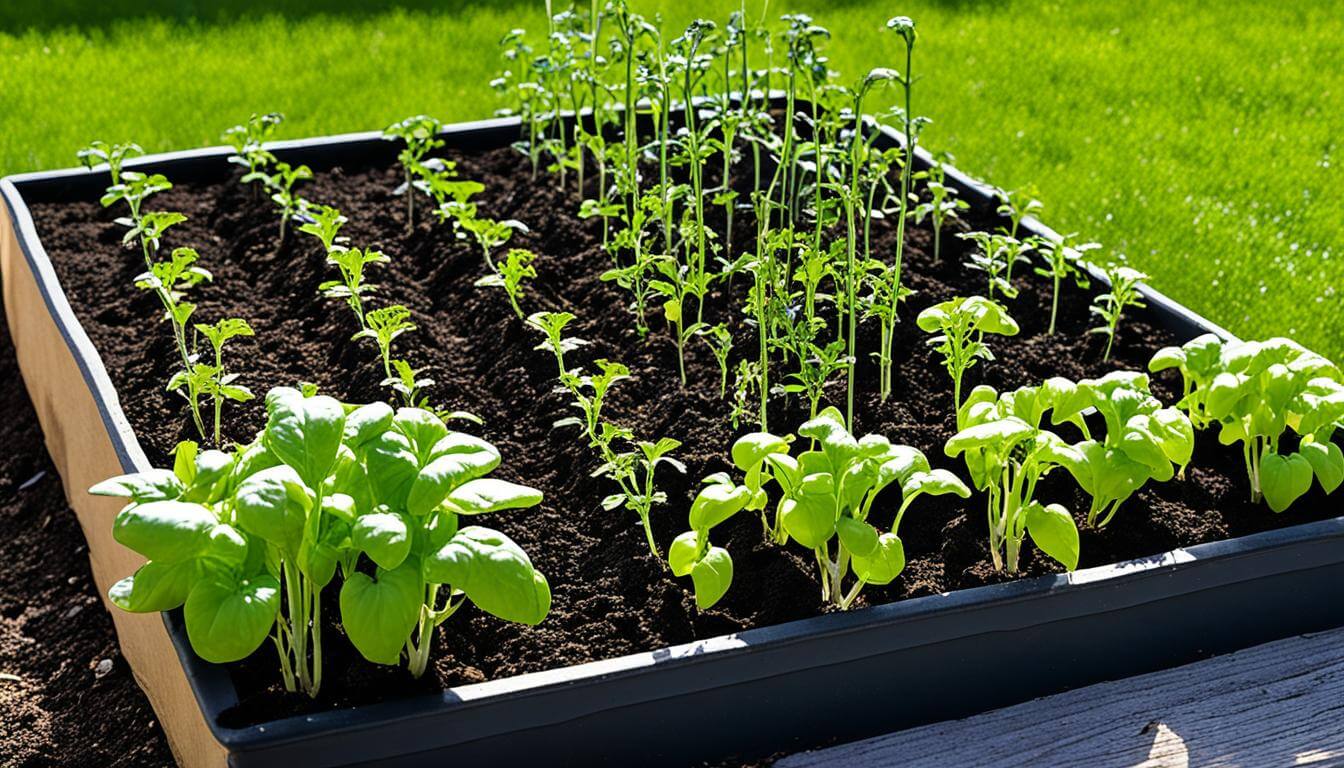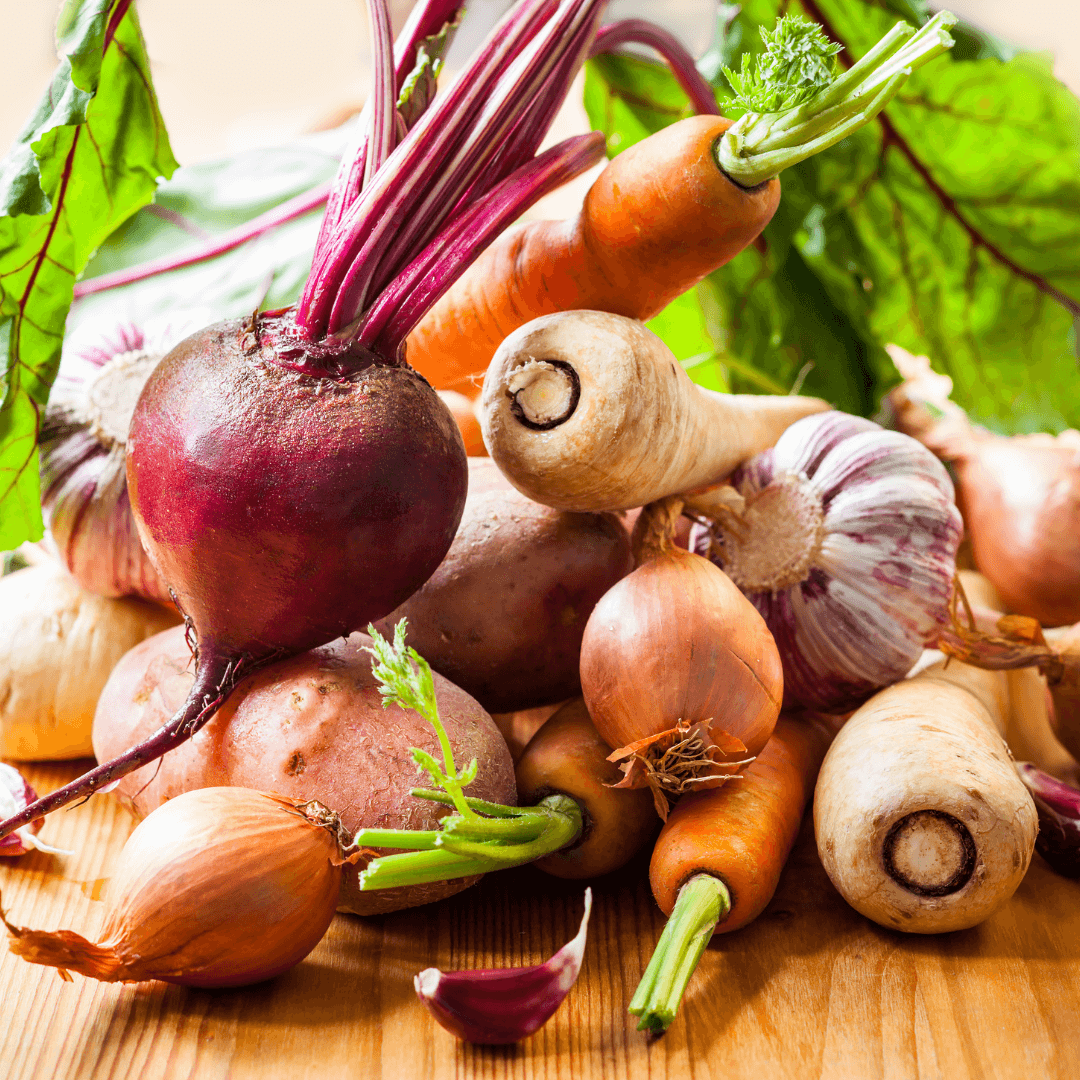As we find ourselves face-to-face with unprecedented times, the concept of a survival garden becomes less of a novel idea and more of a necessary step toward protecting our loved ones during moments when uncertainty grips our way of life, whether due to natural disasters, pandemics, or economic upheaval, a victory garden sprouts not only as a symbol but as a provider of food security. In the soil of these resilient food crops, we sow seeds of hope and self-reliance that grow into a bastion against emergencies. Learning how to plant a survival garden can come in handy when times get tough.
The wisdom of our forebears echoes through time, reminding us that a survival garden requires more than just planting and watering; it requires a commitment to nurturing life amidst adversity. Much like the victory gardens of yesteryear, these green spaces serve as lifelines, connecting us not just to the earth beneath our feet but to a sense of control when the world beyond our gardens seems turbulent. Heirloom seeds are a must for every vegetable survival garden.
Key Takeaways
- Grasp the essential role of a survival garden during unforeseen emergencies.
- Discover how victory gardens from our past lay the groundwork for today's food security.
- Learn why investing in a survival garden is an investment in our self-sufficiency.
- Understand the significance of selecting resilient food crops for a lasting food supply.
- Recognize that a survival garden requires commitment and cultivation beyond the basics.
Vegetable Seed Vault Kit | 35 Variety Pack
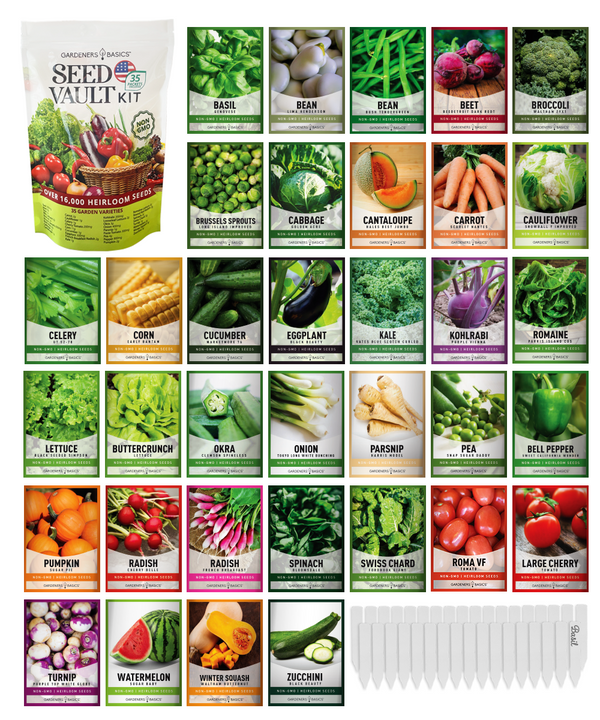
$29.95
$49.95
Ultimate Survival Seed Vault: 16,000+ Non-GMO Heirloom Vegetable Seeds for Emergency Preparedness Introducing the Seed Vault Kit, your all-in-one solution for emergency preparedness and sustainable gardening. This premium seed kit contains over 16,000 non-GMO, Heirloom, Non-Hybrid, and Open Pollinated seeds,… read more
Understanding the Importance of a Survival Garden
In today's unpredictable world, establishing a survival garden has become essential to achieving long-term food sources and self-sufficiency. As we delve deep into the reasons behind creating such a garden, it's clear that the importance stretches beyond mere sustenance—securing a future where our nourishment and well-being are firmly in our hands.
Our ancestors understood this well; they cultivated land not only out of necessity but as insurance against the unknown. Survival gardens today hark back to these historical practices and present a modern-day solution to increasing concerns about emergency preparedness. These gardens empower us to sustain ourselves in the event of disruptions to the food supply chain or other crises that may impede access to commercial food sources.
A survival garden goes beyond hobby gardening—it is a well-planned space, designed to produce an abundant supply of vegetables, fruits, and herbs, all year round. By focusing on various nutrient-dense crops that can be stored or preserved, a well-maintained survival garden becomes a cornerstone of nutritional self-reliance, giving us control over what we consume and how it’s grown.
| Benefits | Considerations |
|---|---|
| Constant supply of fresh produce | Climate & seasonal changes |
| Reduction in food expenses | Space & resource allocation |
| Adaptability to specific dietary needs | Soil quality & improvement |
| Education in agricultural skills | Seed selection & crop rotation |
| Enhanced food security during emergencies | Water supply & conservation strategies |
To guarantee that these goals are met, selecting crops not only for their yield but also for their storability, nutritional value, and ease of growing is imperative. The real power of a survival garden lies in its ability to sustain oneself and one's family, not just in the short burst of summer's bounty but through long-term planning and careful choice of varieties that ensure a balanced diet, regardless of external circumstances.
- Heirloom vegetables for genetic diversity and seed saving
- Root crops such as potatoes and carrots for high-calorie yield and storage ease
- Leafy greens for continuous harvesting and nutritional value
- Legumes for nitrogen fixation and protein
- Fruit trees and bushes for perennial food sources
In sum, cultivating a survival garden is a proactive measure in the quest for emergency preparedness. Whether we are weathering the storm, facing economic instability, or responding to other unforeseen challenges, a survival garden provides peace of mind that extends far beyond the dinner table. At its core, it is an act of foresight and an investment in our continued resilience.
Choosing the Right Location for Your Garden Space
Finding the perfect spot for your garden can be as critical as the seeds you plant. When evaluating locations for garden space, especially if you're working with a small space, the primary considerations should include sunlight exposure, ease of access, and protection from the elements. These factors will profoundly influence the vitality of your crops and, ultimately, your garden's productivity.
Sunlight Exposure: Photosynthesis is the lifeline of your garden, hence selecting a location with adequate sunlight is paramount. Most vegetables require at least six hours of direct sunlight each day. Observe prospective spots throughout the day to ensure they receive enough light without being shaded by buildings or trees.
- Tip: Morning sunlight is particularly beneficial as it dries dew on the plants, reducing the risk of fungal diseases.
Protecting From Elements: A sheltered spot can protect the garden from strong winds that can damage plants or erode soil. However, ensure the area is not too enclosed as this could prevent the breeze that keeps pests at bay.
- Strategy: Utilize fences or shrubs as windbreaks without compromising ventilation or sunlight.
Convenience: Accessibility to your garden is essential for regular maintenance. Water sources should be nearby, and you should be able to reach your garden easily to tend to it.
- Remember: A garden close to your kitchen or workspace will encourage frequent visits and ease of harvest.
Optimizing Use of a Small Space: When space is limited, every inch counts. Vertical gardening, container plantings, or raised beds can maximize your growing area. Another key factor is understanding the plants' growth habits and space requirements to ensure they're given room to expand without competing for light or nutrients.
| Feature | Consideration for Garden Space |
|---|---|
| Sunlight | Minimum of 6 hours of direct sunlight |
| Wind Protection | Sheltered yet ventilated area |
| Accessibility | Close to home and water supply |
| Space Utilization | Vertical, container, and raised bed techniques |
We understand the constraints and possibilities of selecting the garden space, whether sprawling or confined. Applying these guidelines maximizes your garden's potential and ensures a thriving yield.
How to Plant a Survival Garden
Embarking on the journey to establish a survival garden brings us to the foundation of cultivation: the soil itself. Recognizing the critical role of soil quality boosts our food security and guarantees the nutritional value of our harvest. By committing to these preliminary steps, we ensure our survival garden is a source of sustenance and a bastion of health in times of need.
Conducting a Soil Test
Before sowing the first seeds, conducting a soil test is crucial. This initial investigation reveals pH levels, nutrient contents, and potential contaminants that can inform our soil improvement plans. We gain insights into healthy food crop development through professional labs or at-home testing kits.
- Testing for key nutrients: Nitrogen, Phosphorus, Potassium
- Determining soil pH to identify the need for amendments
- Identifying soil structure and type for optimal water retention and aeration
Ultimate Survival Seed Kit: 140 Varieties for Self-Sufficient Gardens & Food Storage
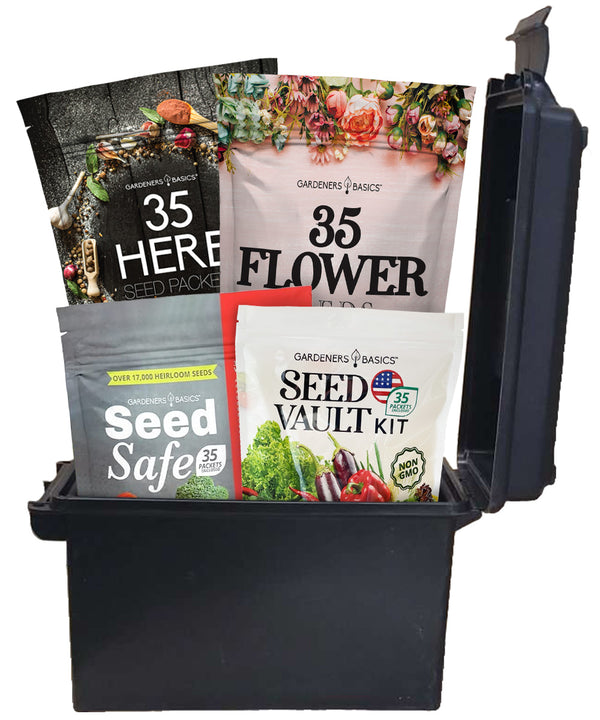
$109.95
$199.95
Ultimate Survival Seed Kit – 140 Variety Pack for Self-Sustaining Gardens, Long-Term Food Storage & FREE Ammo Can for Secure Storage Introducing the Ultimate Survival Seed Kit — your all-in-one solution for sustainable gardening, survival prepping, and self-sufficient living! This… read more
Improving Soil for Healthy Food Crops
Once armed with the knowledge from our soil test, improving soil becomes our next line of action. Adding organic matter through composting, using natural fertilizers, and integrating soil amendments can enhance fertility and structure, paving the way for lush food crops.
- Enhancement with aged compost to improve nutrient content
- Integration of cover crops to enrich and protect soil health
- Regular addition of organic matter to maintain fertile, loamy soil
Selecting Suitable Crops for a Survival Garden
Selecting apt crops is a strategic step in our survival garden blueprint. We focus on varieties that offer high yields, nutritional value, and storability. Root vegetables like carrots and beets are known for their hardiness and can be stored for extended periods. Nutrient-dense sweet potatoes and hardy winter squash are also exemplary for their versatility and longevity post-harvest.
| Crop Type | Benefits | Growth Considerations |
|---|---|---|
| Root Vegetables | Storability and high-calorie content | Requires loose, well-drained soil |
| Sweet Potatoes | Rich in vitamins and can mature in 90 days | Needs warm soil and plenty of sunlight |
| Winter Squash | Stores well throughout winter; versatile in use | Requires space for vines to sprawl |
Selecting crops suited to our specific climate and geographical location maximizes the success of our survival garden. By careful planning and research, we enable our garden to flourish, providing food security for ourselves and our loved ones.
Designing Your Garden Layout
When we approach the design of our vegetable garden, we integrate principles that enhance efficiency and yield. Two of the most impactful strategies for a thriving garden are crop rotation and companion planting. These methods aid in managing soil nutrients and pest control and pave the way for a lush and productive garden.
Crop rotation maintains soil health and reduces the risk of diseases, while companion planting can naturally improve plant growth and deter pests.
An effective garden layout considers the life cycle of plants and their interactions with each other. Here, we detail how these principles can be artfully applied to create a symbiotic ecosystem within our garden space.
- Crop Rotation: This age-old practice is vital in preventing the depletion of soil nutrients, as different crops have varying nutrient requirements. By rotating crops, we reduce the need for chemical fertilizers and mitigate the risks of soil-borne diseases.
- Companion Planting: The strategic positioning of plants can enhance growth, improve soil, and control insects. Certain plant combinations have mutual benefits, such as taller plants providing shade for sun-sensitive shorter plants or aromatic herbs repelling insect pests.
Efficiency in our garden layout means maximizing space, harvesting light, and optimizing water use. To illustrate this, we present an example layout that showcases companion planting and crop rotation.
| Year | Garden Segment A | Garden Segment B | Garden Segment C |
|---|---|---|---|
| Year 1 | Leafy Greens (spinach, lettuce) | Root Crops (carrots, beets) | Nitrogen Fixers (beans, peas) |
| Year 2 | Nitrogen Fixers (beans, peas) | Leafy Greens (kale, chard) | Fruit-bearing (tomatoes, peppers) |
| Year 3 | Fruit-bearing (cucumbers, squash) | Nitrogen Fixers (lentils, clover) | Root Crops (radishes, onions) |
A well-pondered layout with crop rotation and companion planting fortifies the resilience of our vegetable garden. We encourage a sustainable and bountiful harvest by respecting plants' natural relationships and cycles.
We encourage you to observe the principles highlighted above in the layout of your garden. Through trial, experience, and continued learning, your garden design will evolve as the plants within it do—each year growing more capable and robust.
Integrating Water Sources into Your Garden Plan
When we consider establishing a survival garden, the emphasis is often on the crops and soil quality, yet an equally crucial element is ensuring a reliable water source. A consistent water supply forms the lifeblood of our garden, vital for plant health and productivity. Our focus on water conservation and irrigation strategies sustains our garden and preserves this essential resource for future use.
Understanding and implementing effective water conservation techniques can save time, money, and water—making our gardens more sustainable and self-sufficient. Below, we expound on the various methods and technological solutions to integrate an efficient water system into our garden's design.
By harvesting rainwater and employing drip irrigation, we cater to the needs of our garden while contributing to wider water conservation efforts.
We are guided by principles encouraging wise water use, from simple mulching and choosing drought-resistant plant varieties to more advanced solutions such as installing timed irrigation systems. These methods are designed to ensure that no drop goes to waste.
- Using rain barrels to collect and store rainwater for garden use is economical and eco-friendly.
- Drip irrigation systems deliver water directly to the plant's roots, drastically reducing evaporation and water runoff.
- Mulching conserves moisture in the soil, minimizes weeds, and improves soil quality over time.
- Selecting plants suited to the local climate (known as xeriscaping) can diminish the need for extra watering.
We aim to balance keeping our plants hydrated and avoiding overwatering, which can lead to root rot and wasted resources. As we look further into the intricacies of garden water management, we find that even the layout of our garden can play a pivotal role in water conservation.
| Garden Feature | Water Conservation Benefit |
|---|---|
| Soil Contours | Directs water flow to plants, reducing runoff |
| Plant Positioning | Grouping plants with similar water needs minimizes waste |
| Native Plants | Requires less watering, adapted to local rainfall patterns |
| Automated Timers | Optimizes watering schedules, prevents overuse |
In our quest for sustainability, we harness technologies and nature-informed practices to create an efficient water system within our garden. As stewards of the earth, we take responsibility for every aspect of our survival garden, and water conservation is a paramount part of our gardening practice. By meticulously planning and integrating a dynamic irrigation system, we step towards a garden that survives and thrives with minimal impact on our precious water resources.
Choosing Seeds: Heirloom vs. Hybrid
As we venture into the heart of sustainable gardening, our decision on whether to use heirloom or hybrid seeds can have a long-lasting impact on our garden's diversity and resilience. Both types hold unique advantages, but we focus on the deep-rooted heritage and benefits that heirloom seeds offer for a survival garden. Let’s unpack the reasons behind this choice and offer guidance on sourcing and preserving these genetic treasures for our future gardens.
The Benefits of Heirloom Seeds for Long-Term Sustainability
Heirloom seeds, often heritage seeds, are the progeny of plants passed down through generations of gardeners, revered for their genetic purity and robust characteristics. These seeds have remained unaltered for at least fifty years, offering us a connection to our agricultural past and a promise for our future food security.
- Genetic Diversity: Heirlooms represent various plants, giving us a rich genetic pool that bolsters disease resistance and adaptability to climate variations.
- Superior Flavor and Nutrition: Many gardeners prize heirloom varieties for their unmatched flavor profiles and nutritional value, qualities often diluted in commercial hybrid counterparts.
- Seed Saving: One of the most critical aspects of choosing heirloom seeds is saving seeds from one harvest and using them in the next planting season, ensuring a cycle of self-reliance.
Seed Safe Survival Seed Kit - 35 Variety Pack
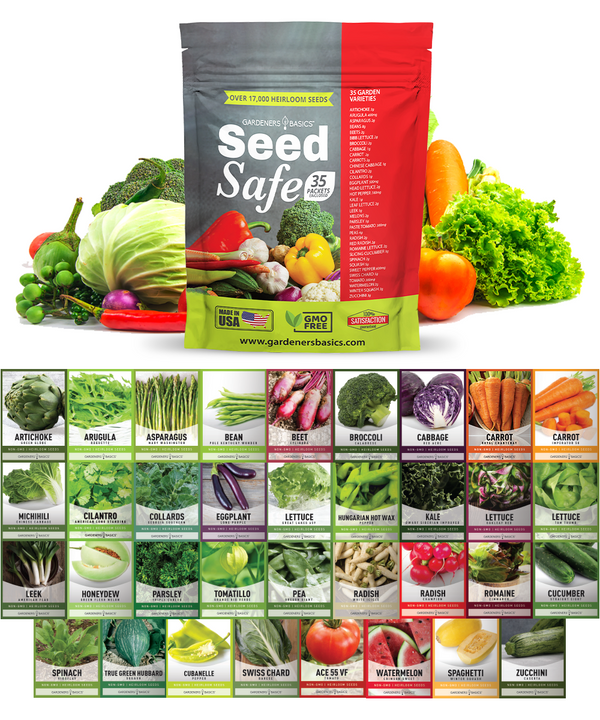
$29.95
$49.95
Seed Safe Survival Seed Kit: The Ultimate Heirloom Collection for Self-Sufficient Gardening Introducing the Seed Safe - 35 Varieties of Heirloom Vegetable, Herb, and Fruit Seeds, the ultimate solution for gardeners who want to secure a bountiful future harvest. This… read more
While hybrids, crossbred for specific traits like shelf-life or uniformity, offer their own benefits, they lack the heirloom’s cornerstone of sustainability—reproducibility. Hybrid seeds do not reliably pass on parental traits to their offspring, thus requiring gardeners to purchase new seeds yearly. In contrast, when properly stored, heirloom seeds become perpetual gifts to us—seeds that grow and thrive under the stewardship of careful gardeners.
Sourcing and Storing Seeds for Future Planting
Locating and storing heirloom seeds with care will guarantee the vitality of our survival garden in seasons to come. This task goes beyond merely selecting seeds; it also involves embracing our role in the cycle of preservation and diversity.
- Seed Suppliers and Exchanges: We carry a large selection of heirloom seeds perfect for your survival and victory gardens.
- Community Connections: Participate in garden clubs or online forums focused on heirloom gardening, as these can be bastions of knowledge and resources for acquiring rare or locally adapted seeds.
- Storing Seeds: Store seeds in cool, dry, and dark conditions to maintain viability. Use airtight containers, such as jars with moisture-absorbing packets, to ward off humidity that can cause premature seed germination or decay.
Mindful practices in sourcing and storing seeds are imperative for continuous harvests and safeguarding an ecological legacy. By investing in heirloom seeds and respecting their storied lineage, we significantly contribute to a future rich in biodiversity, food sovereignty, and nutritional self-reliance.
| Seed Type | Reproducibility | Typical Use | Sustainability Factor |
|---|---|---|---|
| Heirloom | Yes, retains true-to-type characteristics | Home gardens, seed saving | High, promotes biodiversity |
| Hybrid | No, offspring vary from parent plants | Commercial agriculture, specific traits | Lower requires new seeds each season |
In conclusion, our deliberate choice to employ heirloom seeds connects us to the enduring tale of earth's abundance. It's through maintaining the antiquity and integrity of these seeds that our gardens are truly sustainable, telling a story of resilience with every plant that takes root. As we curate our seed banks, each vial of heirloom seeds is a chronicle of our ancestors' legacy, a safeguard against future uncertainties, and a step towards solidifying our heritage of growth and sustenance.
Implementing Organic Gardening Techniques
In our steadfast pursuit of resilience, we embrace organic gardening, a method that is not only kind to the environment but also conducive to our goal of sustainability. As we nurture our survival garden, we prioritize techniques such as natural pest control, composting, and organic fertilizers, laying the groundwork for a garden teeming with life and free from synthetic substances.
Natural pest control stands as a cornerstone of organic gardening, ensuring that our plants are defended without the introduction of harmful chemicals. By fostering an environment that attracts predator insects and utilizing plant varieties known for their pest-resistant traits, we leverage nature's mechanisms to maintain the delicate balance within our survival garden.
- Introducing ladybugs to control aphid populations
- Planting marigolds to deter nematodes and other pests
- Cultivating a diversity of crops to prevent widespread pest infestations
One cannot speak of organic gardening without heralding the virtues of composting. This transformative process recycles organic matter into a rich humus teeming with beneficial microorganisms. Compost adds essential nutrients to the soil, fostering healthy plant growth and bolstering yield without artificial fertilizers.
"Composting, a fervent act of recycling, breathes new life into once-wilted matter, completing nature's cycle of growth and decay."
Including organic fertilizers derived from natural sources such as fish and seaweed extracts complements our sustainable approach. These fertilizers gently provide plants with necessary nutrients, promoting steady growth and reducing the chance of nutrient runoff that can accompany synthetic alternatives.
Our commitment to organic techniques permeates every facet of our survival garden, from soil preparation to seed selection. Such methods ensure that we reap the fruits of our labor and the peace of mind from nurturing a toxin-free haven of biodiversity.
In illustration of our dedication to these principles, we provide a table detailing simple yet effective organic pest control strategies that one may employ:
| Pest | Organic Control Method | Beneficial Organisms |
|---|---|---|
| Aphids | Neem oil spray | Ladybugs, Lacewings |
| Cabbage Worms | Bt (Bacillus thuringiensis) | Trichogramma wasps |
| Spider Mites | Insecticidal soap | Predatory mites |
| Slugs and Snails | Iron phosphate bait | Ground beetles |
Through these organic methods, our garden is a source of sustenance and a testament to the harmonious collaboration between mankind and Mother Nature. As stewards of the earth, we walk the path of organic gardening with respect and gratitude towards the land that sustains us.
Maximizing Yield in a Small Space with Square Foot Gardening
Embarking on the square foot gardening journey allows us to effectively utilize limited space while focusing on increasing productivity. By subdividing the garden into one-square-foot sections, each allocated to a specific crop, we foster organized growth and ensure that every inch of soil is harnessed to its full potential. As we guide you through the proactive steps of planning and picking suitable high-yield crops, our shared objective is clear: maximizing yield in our cherished, compact gardens.
Planning Your Square Foot Garden
The cornerstone of maximizing yield through square-foot gardening lies in meticulous planning. By carving out a grid layout, we optimize each square foot to support a specific number of plants, depending on their size and growth requirements. This tailored approach simplifies maintenance and minimizes the wastage of seeds and resources.
With square foot gardening, every plant has its designated place, and every space is a step towards a bountiful harvest.
To commence, you would need to create a raised bed, typically 4 feet by 4 feet, filled with a nutrient-rich soil mix that fosters the ideal environment for plant roots. Moreover, the raised aspect ensures easy access and promotes efficient drainage.
- Calculate the number of plants per square foot based on the crop's size.
- Build or mark off the square foot sections using lath or strings to delineate each section overtly.
- Focus on soil quality and depth to effectively accommodate the chosen crops' root systems.
Choosing High-Yield Crops for Square Foot Gardening
In selecting the right crops, our mantra is to choose quality over quantity. This means prioritizing plants known for their high yield relative to the space occupied. Leafy greens like spinach and lettuce can be planted multiples per square foot, ensuring a continuous supply of fresh produce throughout the season.
| Crop | Quantity Per Square Foot | Expected Yield |
|---|---|---|
| Leafy greens (Spinach, Lettuce) | 4-9 | Continuous harvest |
| Root vegetables (Carrots, Radishes) | 16 | High-density planting |
| Herbs (Basil, Cilantro) | 1-4 | Regular cut-and-come-again harvests |
| Tomatoes (Climbing varieties) | 1 | Vertical growth for maximizing space |
By utilizing the square foot methodology, you must also consider companion planting to enhance the compatibility between neighboring crops and combat pests naturally. Even a small garden bed can become a diverse and productive plot with the right assortment of high-yield crops.
As avid gardeners, we encourage the fusion of enthusiasm and strategy regarding square-foot gardening. It's not just about planting a seed; it's about cultivating a philosophy where every square foot counts toward maximizing yield and our satisfaction in harvesting from a garden that optimizes every available opportunity.
Extending the Growing Season with Hoop Houses and Greenhouses
As dedicated gardeners, we understand the challenge of nurturing plants through the fickleness of weather. Expanding our toolkit with structures like hoop houses and greenhouses is pivotal when we aim to extend the growing season and safeguard our cultivation efforts.
Benefits of Using a Hoop House
The addition of a hoop house to our garden repertoire can offer a multitude of advantages. Perhaps most significantly, a hoop house creates a microclimate that provides warmth and shelter, allowing us to kickstart the season earlier and extend it well into the cooler months. By controlling the environment, we minimize damage from frost and maintain a steady growing condition, which is crucial for cold-hardy crops.
Another substantial benefit is managing moisture levels inside the hoop house. This reduces the incidence of certain diseases that thrive in damp conditions and cuts down on the water we need to use—conserving this precious resource.
- Extended Growing Season: Sowing and harvesting can occur beyond the typical outdoor growing calendar.
- Climate Control: Modifying temperature and shielding plants from harsh conditions.
- Moisture Management: Reduces overwatering and disease prevalence through controlled irrigation.
- Enhanced Plant Growth: Plants often grow faster and healthier within the stable environment of a hoop house.
Bug Out Bag Seed Kit: 105 Varieties of Survival Seeds, Herbs, and Wildflowers
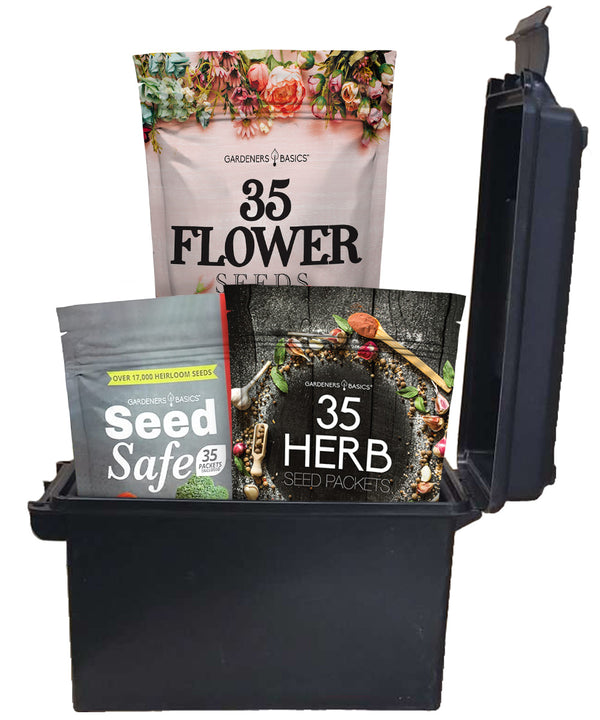
$82.95
$149.95
Ultimate Bug Out Bag Seed Kit - The Perfect Survival Seed Collection for Long-Term Storage Prepare for any emergency or off-grid scenario with the Ultimate Bug Out Bag Seed Kit, your all-in-one collection of survival seeds, herbs, and wildflowers. This… read more
Winter Squash and Other Cold-Hardy Crops
Cold-hardy crops rise as prime candidates when selecting plants that most benefit from these structures. With its ability to thrive in cooler temperatures and store magnificently through winter, winter squash is an exemplary choice for a hoop house environment.
These crops, along with kale, collards, and broccoli, survive and flourish under such protection, providing us with a continuous harvest and diverse nutrients. The following is a list of some ideal crops for hoop house cultivation:
- Winter Squash: Stores well and enjoys a hoop house's cooler, but not freezing, temperatures.
- Kale: Hardy and nutrient-rich; it can grow in cooler temperatures than a hoop house provides.
- Spinach: Tolerant to cold, a hoop house can protect it from extreme frosts, extending its season.
- Hardy Herbs: For example, rosemary and thyme can benefit from the added warmth and protection.
Protecting Your Survival Garden from Pests and Diseases
As we cultivate the richness of our survival garden, safeguarding it from pests and diseases becomes a paramount concern. This protection is essential to maintain the health and productivity of our crops. We are dedicated to implementing strategies that preserve our hard-earned harvest using disease-resistant varieties and natural pesticides, ensuring a pure and wholesome yield.
We begin by selecting plant varieties known for their resilience against common garden afflictions. Our choice to integrate disease-resistant varieties into the garden not only reduces the likelihood of disease outbreaks but also diminishes the need for intervention with harsh chemicals.
- Tomatoes bred for resistance to blight
- Cucumbers less susceptible to powdery mildew
- Basil varieties that stand strong against downy mildew
Supplementing our proactive selection with natural, eco-friendly pest management methods empowers us to keep our garden thriving. Deploying natural pesticides allows us to address pest infestations without compromising our ecosystem's integrity or health.
Natural pesticides, like neem oil and diatomaceous earth, offer us safe alternatives to synthetic chemicals, keeping our food supply clean and our environment untainted.
When approaching pest management, we often turn to the wisdom of integrated pest management (IPM) practices:
- Encouraging beneficial insects that prey on pests
- Installing barriers and traps to physically manage pest populations
- Diversifying our plantings to reduce the impact of a pest or disease outbreak
Understanding and implementing these methods requires careful observation and a willingness to adapt. Regular monitoring of our garden's inhabitants allows for early detection of potential problems, allowing us to manage them before they escalate.
To solidify our knowledge, we document common threats and organic countermeasures:
| Common Garden Threat | Natural Countermeasure |
|---|---|
| Aphids | Ladybug and lacewing introductions |
| Fungal Diseases | Baking soda sprays as fungicides |
| Slugs | Iron phosphate baits |
| Tomato Hornworm | Bacillus thuringiensis (Bt) |
We stand united in the understanding that protecting our garden is not an occasional task but a continuous commitment to vigilance and care. As we tend our haven of nutrition and resilience, we remain steadfast in our approach: fostering a garden that is both lush with life and fortified against the fleet of pests and diseases that threaten its stability.
Conclusion
Throughout this journey, we've unearthed the layers of wisdom that underscore the significance of a survival garden. Our excursion into sustainable cultivation has revealed that a well-tended garden offers much more than a mere bastion against emergencies; it is a beacon of resilience, a testament to sustainability, and a step towards nutritional self-reliance. By weaving strands of knowledge from soil preparation to pest control, we've charted a course toward a future where food security and environmental stewardship are synonymous.
In the face of a world rife with unpredictability, our commitment to fostering a survival garden becomes not merely an act of preparation but a profound expression of autonomy. This green initiative allows us to nourish our bodies with homegrown produce and feed our spirit of independence. Enriching the soil with each seed we plant, we cultivate a legacy that epitomizes the heart of our human resilience and the soul of sustainable living.
As we close this chapter, let us carry forward our ancestors' ethos, harmoniously integrating survival gardening principles into our modern lives. By championing this alliance of nature and nurture, we bolster our self-sufficiency, ensuring that each harvest brings us closer to a lifestyle rich in health, harmony, and empowerment. Thus, the survival garden blooms—a verdant symbol of our dedication to resilience, sustainability, and nutritional self-reliance.
FAQ - How to Plant a Survival Garden
What is a survival garden, and why is it important?
A survival garden is a dedicated plot of land developed to provide a reliable food source during emergencies or times of scarcity. It is vital for food security, resilience of food crops, and can be a key component of emergency preparedness. The concept is similar to the victory gardens of the past, created to aid in self-sufficiency and reduce pressure on public food supply during war.
How does a survival garden contribute to long-term food sources?
A survival garden is designed to produce various food crops to sustain a household for an extended period, ensuring self-sufficiency. It's essential to emergency preparedness, providing a long-term food source to manage independently without relying on external food supply chains.
What factors should be considered when choosing a location for a survival garden?
When selecting a location for a survival garden, key factors include sunlight exposure, convenience of access, protection from the elements, and the ability to make the most out of a small space. Choosing a site where plants can thrive and be easily maintained is critical.
Why is conducting a soil test significant when planting a survival garden?
A soil test is essential to determine the soil's nutrient content, pH level, and overall health. This information guides the process of improving soil to ensure it can support healthy food crops, which is foundational to the success of a survival garden.
Which crops are suitable for a survival garden?
Suitable crops for a survival garden include those that are hardy, nutrient-rich, and have a good yield. Root vegetables and winter squash are excellent choices due to their adaptability to various conditions and ability to be stored for extended periods.
How does crop rotation and companion planting benefit a garden layout?
Crop rotation helps prevent soil depletion, reduces the risk of pests and diseases, and can improve soil structure and fertility. Companion planting maximizes space, attracts beneficial insects, and can naturally repel pests. Both practices are important for enhancing the productivity and health of your survival garden.
Why is a reliable water source critical in survival gardening?
A dependable water source is vital for survival gardening because consistent and adequate watering is key to plant growth and health. Without a reliable water source, a garden can quickly fail. It's also important to consider water conservation and efficient irrigation methods.
What are the advantages of heirloom seeds over hybrid seeds for a survival garden?
Heirloom seeds have numerous benefits for a survival garden, including saving seeds yearly, which preserves plant genetic diversity and adaptability. Heirloom varieties often have better flavor and are generally considered more resilient in the face of local pests, diseases, and weather variations.
How can organic gardening techniques enhance a survival garden?
Organic gardening techniques contribute to a sustainable and ecological approach to food production. Practices like composting, natural pest control, and using organic fertilizers maintain soil health, reduce chemical use, and ensure a productive survival garden over a longer term.
What is square-foot gardening, and how does it benefit small garden spaces?
Square foot gardening is a method that divides the garden space into small square sections, optimizing space utilization and allowing for a more organized approach. It's particularly beneficial for small garden areas as it maximizes yield, minimizes weeds, and simplifies garden management.
How can hoop houses and greenhouses extend the growing season?
Hoop houses and greenhouses create protected environments for plants, moderating temperature fluctuations and extending the growing season by allowing gardeners to plant earlier in the spring and grow later into the fall. They are especially useful for cold-hardy crops like winter squash.
What strategies can protect a survival garden from pests and diseases?
Selecting disease-resistant plant varieties and implementing natural pesticides is important to protect a survival garden from pests and diseases. Crop rotation, proper spacing, and maintaining garden hygiene can significantly reduce the risk of pest and disease outbreaks.
Survival & Wildflower 70-Variety Seed Kit - Heirloom, Non-GMO Seeds for Gardeners
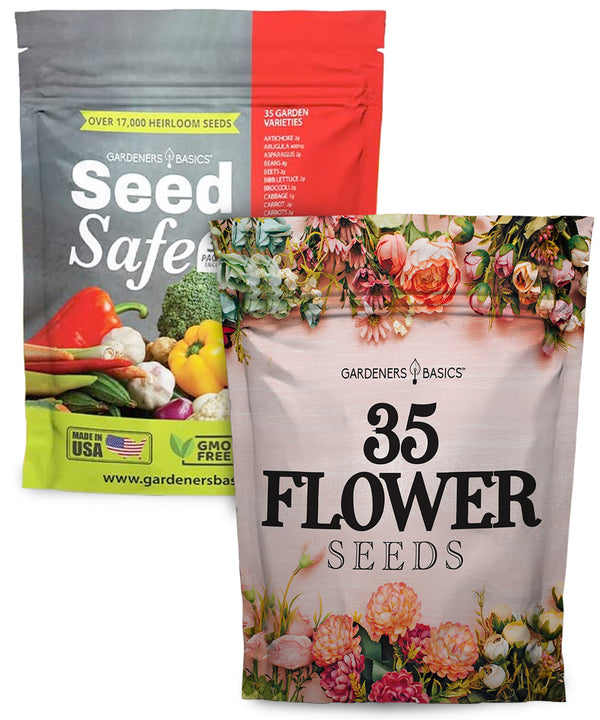
$55.96
$99.95
Ultimate 70-Variety Survival & Wildflower Seed Kit - Premium Heirloom, Non-GMO, Annual & Perennial Seeds for Gardeners Introducing the Ultimate Survival & Wildflower Seed Kit – a premium selection of heirloom seeds carefully curated for gardeners, survivalists, and nature enthusiasts… read more



